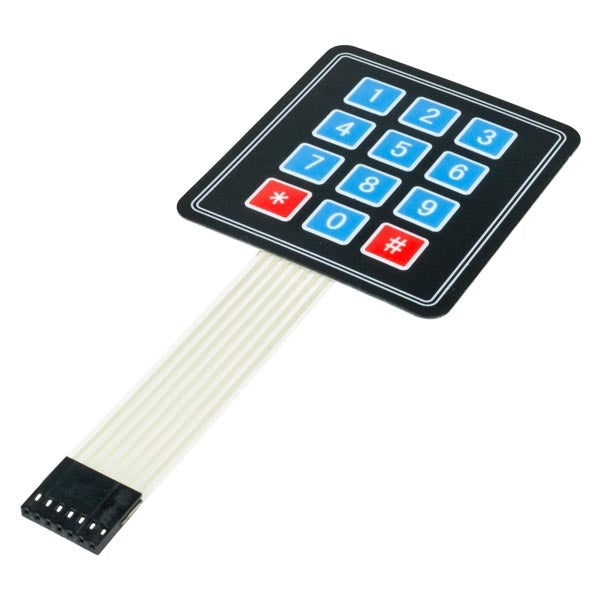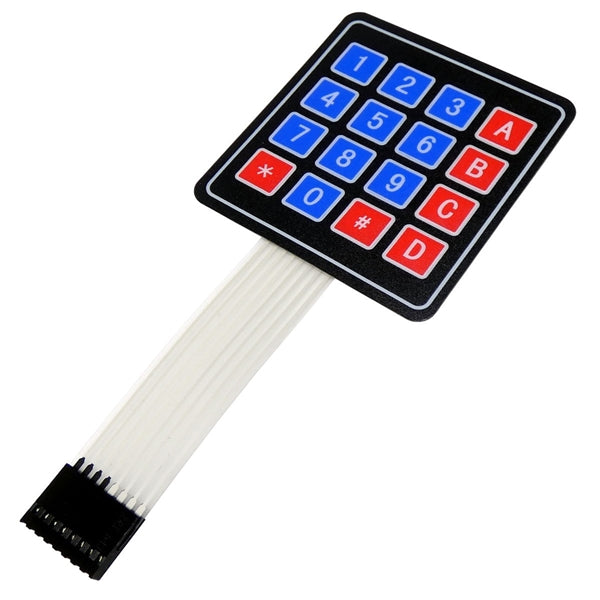Choosing the Right Membrane Switch for Your Business Needs
Choosing the Right Membrane Switch for Your Business Needs
Blog Article
Recognizing Membrane Switches: The Key to Durable and Reputable Controls

What Are Membrane Layer Buttons?
Membrane switches are a sophisticated option in the realm of interface modern technology, integrating performance and style flawlessly. These gadgets offer as a user interface in between customers and digital systems, integrating a number of components right into a small style. Usually constructed from adaptable, thin layers of materials, membrane buttons are made to reply to touch, enabling users to engage with machinery and digital gadgets efficiently.
The key aspects of a membrane layer button consist of a printed circuit layer, visuals overlay, and a spacer layer that protects against unintentional activation. The graphic overlay can be customized to mirror brand identification or customer choices, enhancing aesthetic appeals while making certain use. Membrane layer switches are commonly used in different applications, consisting of medical devices, customer electronics, and commercial tools, owing to their durability and resistance to ecological elements such as wetness and dirt.
One of the vital benefits of membrane switches is their ability to withstand deterioration, making them ideal for high-traffic atmospheres. Additionally, they are light-weight and need marginal room, permitting ingenious layouts in item growth. In general, membrane layer switches represent a practical and reliable option for modern-day digital user interfaces, weding innovation with user-centric style principles.
How Membrane Layer Switches Over Job
The procedure of membrane switches hinges on an easy yet efficient system that equates individual input right into electronic signals. When a customer presses the switch, the leading layer warps, permitting a conductive aspect in the circuit layer to make call with an equivalent conductive pad on the underside of the graphic overlay.
The layout of membrane switches can differ, but they frequently incorporate domes or responsive aspects to supply comments to the individual, enhancing the total experience - membrane switch. The materials made use of in membrane layer switches, such as polyester or polycarbonate, add to their sturdiness and resistance to environmental elements, consisting of dampness and dirt. The published circuits are generally encapsulated, which safeguards them from wear and tear over time.
Advantages of Membrane Buttons

Additionally, membrane layer switches are understood for their sturdiness. Created from durable materials, they are immune to dust, wetness, and physical wear, which dramatically expands their life-span contrasted to conventional mechanical switches. This toughness makes them specifically ideal for high-traffic atmospheres and applications requiring longevity.
One more substantial benefit is the ease of cleaning and maintenance. The smooth surface of membrane layer changes lessens dust build-up and is commonly invulnerable to spills, making them ideal for settings that call for frequent sanitization.
Additionally, membrane layer buttons supply a structured profile, causing a thinner layout that find out this here can be integrated into different gadgets without including mass. This feature not only enhances the aesthetic allure yet also contributes to a more ergonomic item layout.
Applications of Membrane Switches
Functional and user-friendly, membrane layer buttons find applications across a variety of industries, consisting of clinical tools, consumer electronic devices, and commercial devices. In the clinical field, these switches are essential to tools such as diagnostic tools, person surveillance systems, and infusion pumps, where dependability and convenience of cleaning are essential. Their capacity to preserve and hold up against severe environments functionality makes them perfect for such applications.

In consumer electronic devices, membrane layer switches are made use of in items like microwaves, washing devices, and remote controls - membrane switch. Their smooth style enables instinctive individual interfaces, boosting the total individual experience while providing durability and resistance to tear and use
Industrial equipment likewise gains from membrane layer switches, especially in control panels for equipment and automation systems. These switches provide protection against dirt and moisture, making sure regular performance in challenging environments. click here for info Moreover, their personalized functions allow producers to customize them to certain operational requirements, enhancing effectiveness and performance.
Picking the Right Membrane Layer Switch Over
When selecting a membrane button, it is crucial to think about numerous variables that affect performance and viability for details applications. The main considerations consist of ecological problems, responsive responses, durability, and layout requirements.
First, analyze the operating setting; buttons subjected to wetness, chemicals, or extreme temperature levels need certain materials to make sure long life and functionality. Next off, review the demand for responsive feedback. Relying on customer interaction, some applications may gain from a responsive action to validate activation, while others might like a non-tactile layout for aesthetic reasons.
Resilience is one more vital element; membrane layer buttons need to be created to stand up to regular use, impacts, and abrasion. Make certain the selected button can sustain the expected lifecycle, especially in high-usage circumstances.

Conclusion
In conclusion, membrane switches over serve as necessary components in the layout of trusted and resilient control systems throughout numerous industries. The versatility of membrane layer switches allows for customized services that meet particular functional needs, enhancing their relevance in modern-day technology.
Membrane changes stand for a critical aspect of modern-day user interface style, blending capability with durability in various applications.Membrane buttons are an innovative service in the realm of individual interface innovation, integrating performance and design effortlessly. Usually built Extra resources from adaptable, slim layers of materials, membrane layer buttons are made to react to touch, making it possible for users to engage with machinery and electronic devices properly.
The layout of membrane switches can differ, yet they usually incorporate domes or responsive aspects to supply feedback to the customer, improving the general experience.In conclusion, membrane switches over offer as crucial elements in the layout of durable and trustworthy control systems across various industries.
Report this page